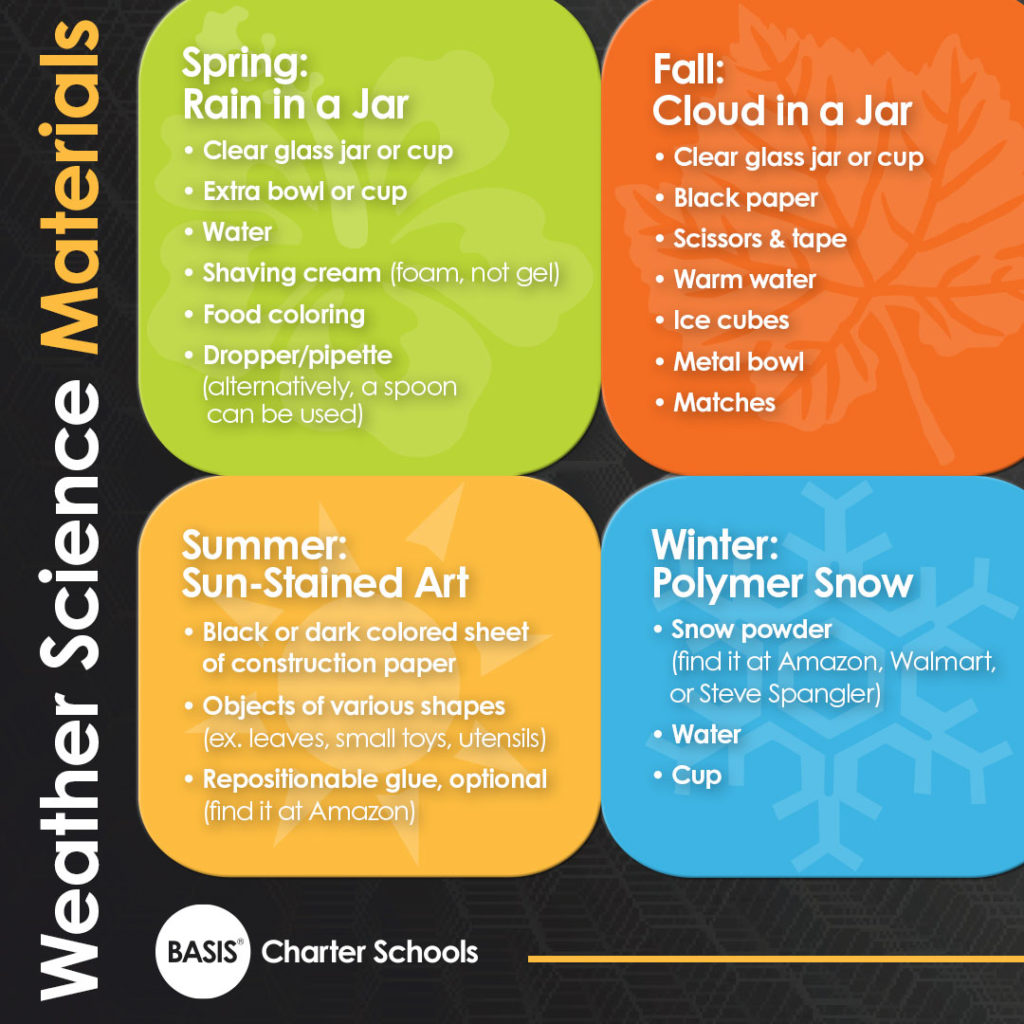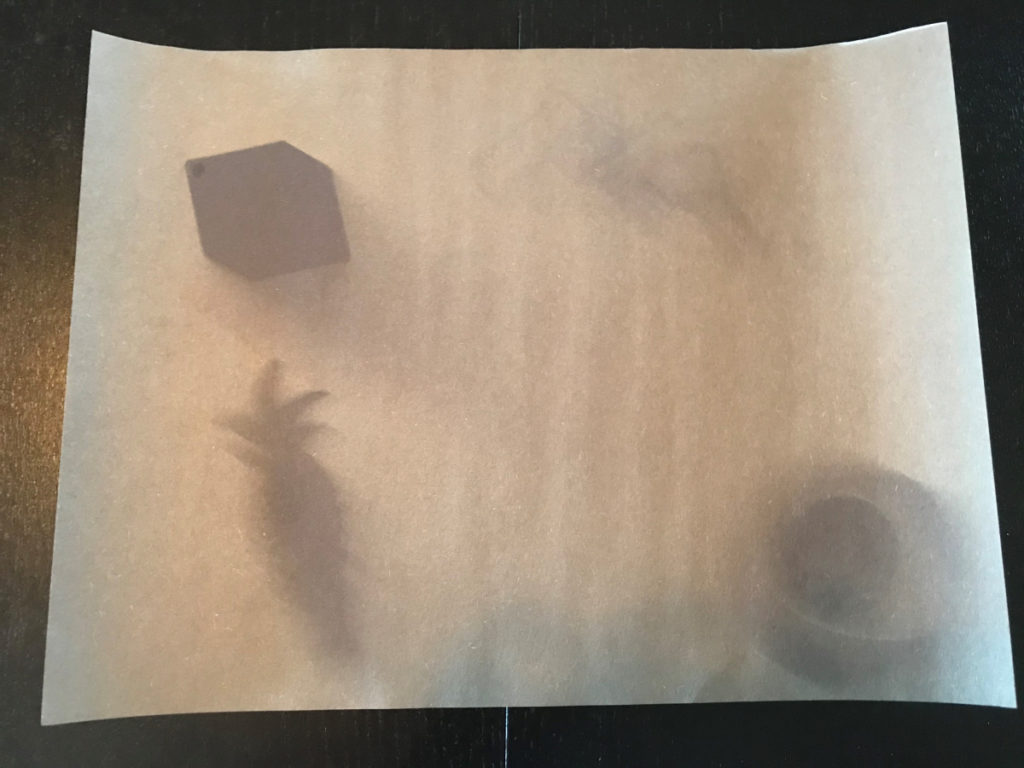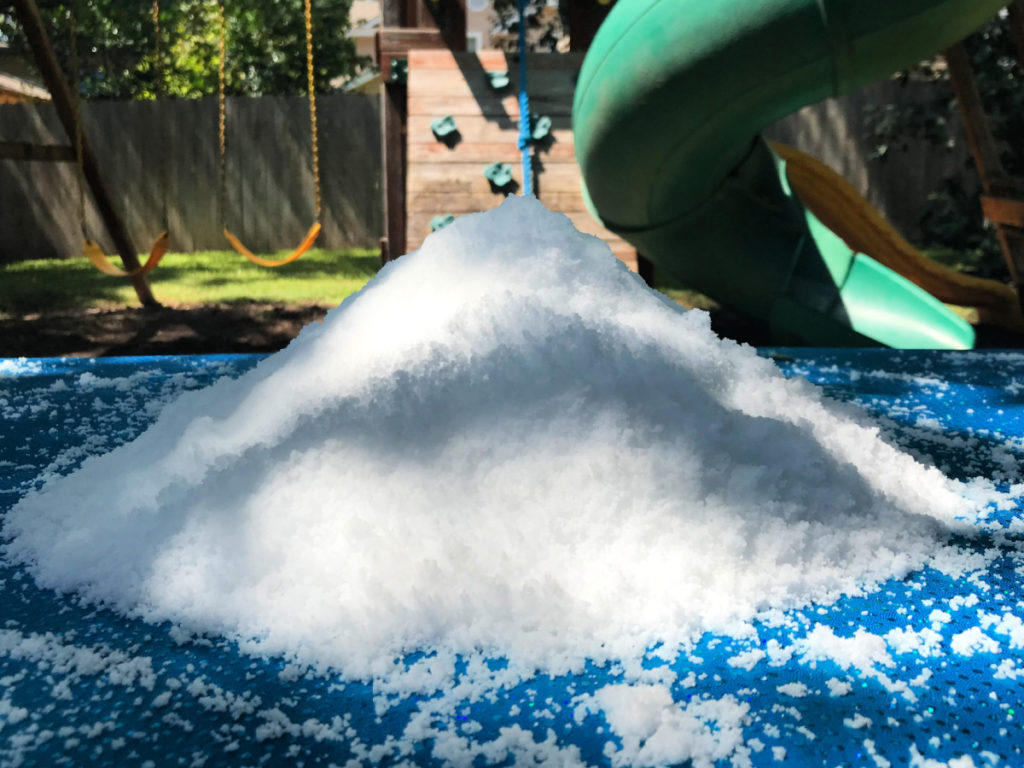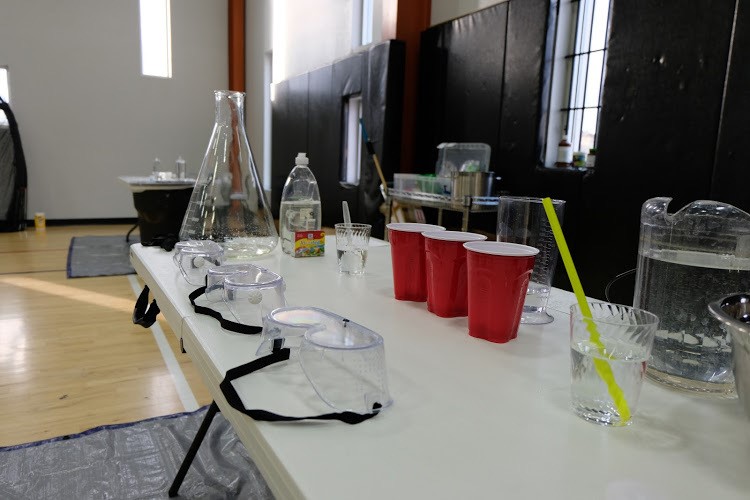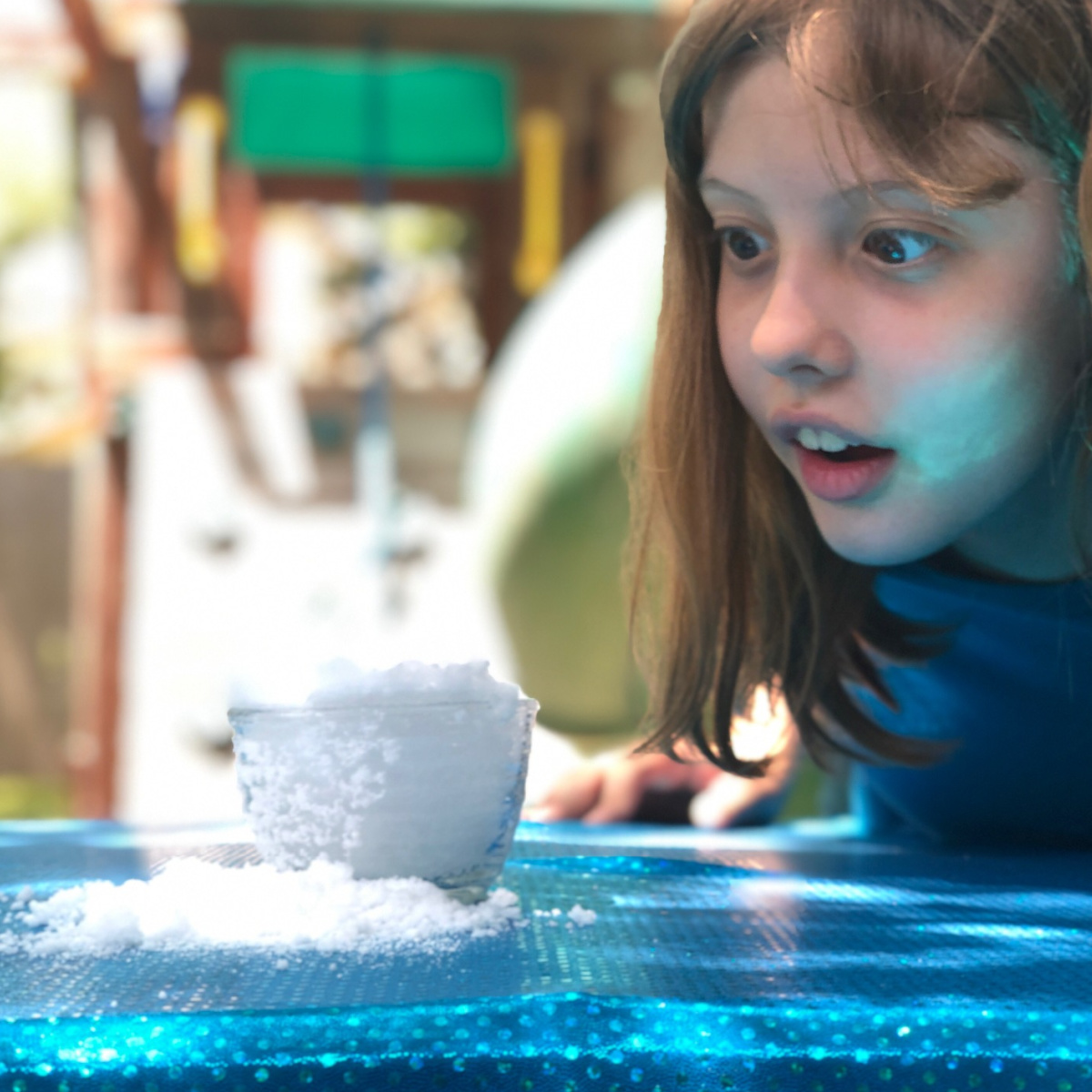
Kitchen Chemistry: Weather Science
Today, you can do these four simple weather science activities with your kids, and they will get to experience the four seasons right from their own kitchen! We have advice about how to get started, and how to tailor this activity to children of different ages.
For more ideas about summer experiences you can do while learning at home with your kids, visit the main page, Charter a Summer of Learning.
Weather Science for the Four Seasons
My science students were always fascinated by weather. On rainy days, they loved pressing their faces against our classroom windows and watching the raindrops fall from the sky. Because they were so curious about this topic, I decided to design four simple weather activities, each linked to a different season:
Materials for Weather Science Activities
These weather science activities can easily be done with common materials. Here is a list of the basic materials you will need:
Spring: Rain in a Jar—Materials
Clear glass jar or cup
Extra bowl or cup
Water
Shaving cream (foam, not gel)
Food coloring
Dropper/pipette (alternatively, a spoon can be used)
Summer: Sun-Stained Art—Materials
Black or dark colored sheet of construction paper
Objects of various shapes (ex. leaves, small toys, utensils)
Repositionable glue, optional (find it here)
Fall: Cloud in a Jar—Materials
Clear glass jar or cup
Black paper
Scissors & tape
Warm water
Ice cubes
Metal bowl
Matches
Winter: Polymer Snow—Materials
Snow powder (find it at Amazon, Walmart, or Steve Spangler)
Water
Cup
Procedures for Weather Science Activities
Once you have gathered your materials for an activity, here are the procedures for each season.
Spring: Rain in a Jar—Procedure
Fill the clear glass jar ¾ full with water.
Spray shaving cream on top of the jar covering the water to form your “cloud.”
In a separate bowl/cup, mix water with a few drops of food coloring.
Using the dropper, drop the colorful water onto the shaving cream “cloud” 1 drop at a time.
When the rain cloud becomes saturated enough, watch as the “rain” comes breaking through the “cloud!”
Note: If you do not have a dropper or a pipette, a spoon can be used to pour a few drops at a time of the colorful water onto the shaving cream “cloud.”
Summer: Sun-Stained Art—Procedure
Collect some objects around the house or pieces of nature from outside.
Place the sheet of dark colored construction paper in a very sunny location outside.
Position your objects on the paper. If you are using light objects, like flowers & leaves, use small rocks to hold them in place.
After 3–5 hours, remove the objects from the paper. You now have custom made art!
Alternative: Glue your objects to the paper with repositionable glue. Tape your paper up in a sunny window. After a few days, take your paper down and remove the glued objects.
While you are waiting for the art to appear, you could also make solar oven s’mores.
Fall: Cloud in a Jar—Procedure
Cut the black paper to fit halfway around the jar, leaving about one inch of space at the bottom of the jar. Tape it in place on the outside of the jar.
Add about two inches of warm water to the glass jar.
Fill the metal bowl with ice cubes.
Light a match and hold it inside the jar for a few seconds and then drop it into the warm water.
Quickly cover the jar with the bowl of ice.
Look into your jar from the open side and observe what is happening. To see the cloud even better, turn off the lights and shine a flashlight into the jar towards the black paper.
After watching your cloud for a while, you can take the container of ice off of the jar and watch your cloud rise up and disappear!
Winter: Polymer Snow—Procedure
Measure 1 teaspoon of snow powder and add it to the cup.
Pour 2 ounces of room temperature water on top of the snow powder in the cup.
Watch & observe the snow created in front of your eyes!
Ask your child to list the similarities and differences between the polymer snow that they created and the real snow that falls from the sky.
Note: Check the ratios of snow powder to water on your snow powder container as they may be different from what is listed above.
Adapting Weather Science Activities for Preschoolers
For young children, I always like to begin science experiments with a story time. Four Seasons Make a Year by Anne Rockwell is one of my favorites for this set of activities, but there are many other good reads that explore the seasons. Ask your child to describe what the weather looks and feels like in each season. Let them know that today they are going to explore the weather of the different seasons with science experiments. Encourage them to make observations and ask questions about what they see, hear, and feel along the way!
Presenting Weather Science Activities to Grade Schoolers
Children in middle grades are often fascinated by clouds. They look like giant puffs of floating cotton candy, after all. That is why I especially like the Spring and Fall activities for children in this age group.
In the Fall activity, the water in your jar simulates bodies of water on Earth. Ask your child to name some bodies of water—ponds, lakes, oceans, etc. When the water molecules get extra energy from a heat source, in this case the match, they turn from liquid to gas, forming what we call water vapor. Ask your child where they think the heat source in nature comes from? Hint—they saw its powerful effects in the Summer activity! As the warm air containing water vapor rises, it cools and the water vapor condenses to form tiny liquid droplets, which cling to dust particles in the air. When billions of droplets come together, they form a cloud!
Now what happens when the cloud gets too big? As more and more droplets come together in the cloud, the droplets begin to merge forming even bigger droplets. When the droplets become too heavy to stay suspended in the cloud, what do you think happens? Have your child think back to Spring activity to make the connection.
Extending the Activity for Upper Schoolers—Chemistry
While the Winter activity is fun for all ages, it provides a great chemistry extension for your teens! The powder you have is something call a “superabsorbent polymer,” or SAP for short. SAPs can absorb and retain extremely large amounts of liquid compared to their own mass. Based on the properties of SAPs, ask your teen to think of some real world applications for them. Hint: if you have a baby brother or sister at home, that may give you a clue!
Read More About Weather Science
“Cloud Formation,” NASA Climate Kids
“Sunny Science: Sun Up, Fade Out,” Scholastic
“Cloud,” National Geographic
“Snow,” Britannica Kids
Charter Moms Chats
Watch Audrey Hagopian’s interview, including weather science demonstrations, with Inga Cotton on Charter Moms Chats.
For more ideas about summer experiences you can do while learning at home with your kids, visit the main page, Charter a Summer of Learning. If you love kitchen chemistry, check out Elephant Toothpaste, also presented by Audrey Hagopian.
About the Author
Audrey Hagopian is the Regional Director of Primary Schools for BASIS.ed. Formerly a 4th and 5th grade science teacher in Phoenix, Arizona, Audrey still loves sharing the wonderful world of chemistry with her community! When not stirring up experiments in her kitchen and running a school, Audrey enjoys reading, cooking, and staying sane in quarantine by hiking and mountain biking.


